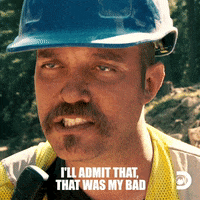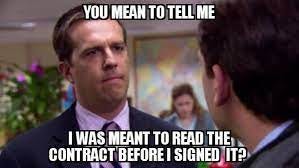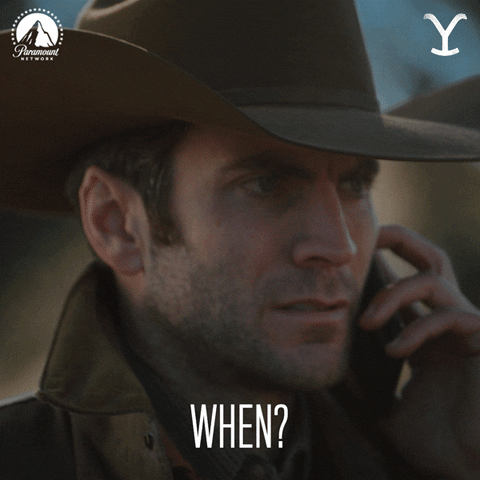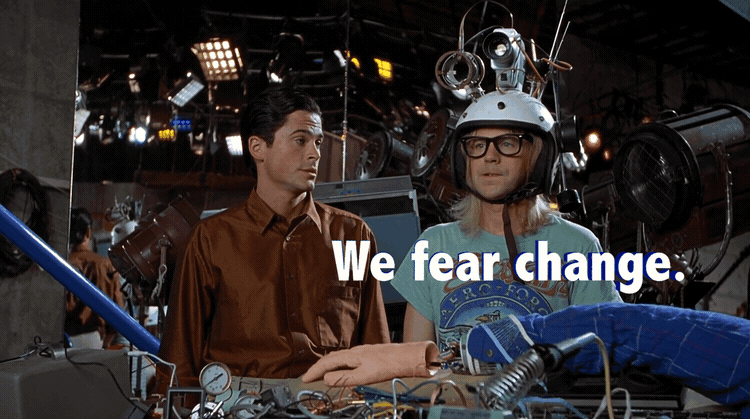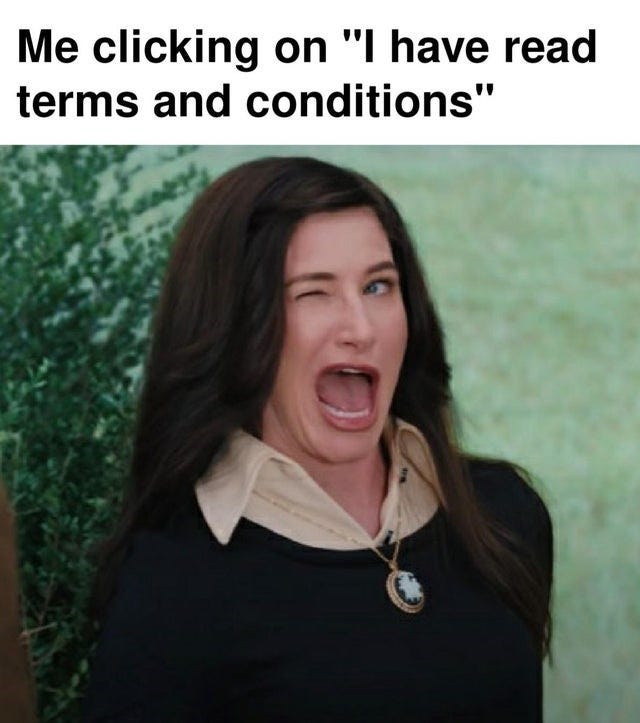Hey! Happy Saturday! Matt here.
Welcome to the Construction Curiosities newsletter!
This weekly Newsletter explores my Curiosities about the Construction Industry. It's meant to make you think, smile, and become a better, more thoughtful Construction Professional.
So last week I announced we’d be moving the CM Mentors Podcast recordings to the evening and livestreaming the recordings to get more engagement and audience interaction…
Well, I had the cart before the horse on that and didn’t realize the busy schedules Kyle and I had upcoming and then the Holidays. So we will be taking a little break from recording until after the New Year.
I did the math & we had an episode every week for 75% of this year. Not bad for a couple of dudes with day jobs who had no idea what we were getting into back in January.
Maybe that will be Season 1? I dunno. I still have no idea how this works. 😂
Technically I didn’t say WHEN we would be moving to evenings so I wasn’t all wrong. 😆
In the meantime catch up on the Archive: https://constructionyeti.substack.com/podcast
Summary
This week we will look at:
One Guest Article: What Does the Contract Say?
One Article: Reverse Mentorship
One Meme: Sure, I read the T’s & C’s
One Guest Article
This week’s guest article comes from LinkedIn’s Queen of Construction Contracts, Maegan Spivey.
I’ve been known to get on rants about folks not reading their contracts (they are CONTRACTors, for Pete’s sake) so Maegan’s article really spoke to me. Obviously, you should read the contract before it’s signed, right?
But should you ever read the contract afterward?
Hmmm….
Take it away Maegan!
What Does the Contract Say
My favorite project question is, “what does the contract say?”
Or, as Matt’s been known to say, RTFC (read the f-ing contract).
But why do you do read the contract after signing, when do you do need to read it, and how do you do read it efficiently?
And what can you do if you read the contract and it’s not helping like you think it should?
Why do you read the contract?
Because your company signed an agreement to do the project a certain way. The company you’re part of has given their [written] word to do the project the way the contract says.
Whatever company or structure or world changes happen in the course of a project, the one thing that is not going to change is the terms of the contract. If anything remotely bad happens, guess what everyone will be doing first? You guessed it…reading the contract.
The contract is the institutional knowledge for the life (and warranty!) of that project.
When do you read the contract?
After the contract is executed, the document has more use beyond scopes, schedules, drawings, and specs!
Find your common project problems then go see for yourself if the project contract has something to say about it before they happen.
If you are about to start something new on the project ask, what does the contract say? Things like safety meetings, owner meetings, RFIs, the first pay app, bad weather forecast, delayed payments, and first change order are great opportunities to see if there’s a way the contract details how that should be done. This is also a great way to show compliance with the contract.
Read like the proactive problem solver you are! Construction is full of amazing problem-solvers and out-of-the-box thinkers. So why not find out what you need to do and what can “come up and bite you” beforehand?
How can you read a contract efficiently?
To be efficient in post-execution contract reading... don’t actually read the contract from front to back. Cherry-pick based on your needs.
Use the headers to guide your reading so you don’t drown before you finish the “whereas-es.” My friend Lien Randle calls the table of contents (or headers/section titles if there isn’t one) a PM’s best friend. When the contract’s already been executed, it’s a guide now for the project team. That means you don’t have to read it in order, you can search and find. (Reading from cover to cover, though, is a great way to build your contract skills!)
If any contract language doesn’t make sense in those sections you’re reviewing, try pasting the sentence or section into ChatGPT to reword it to something simpler. Don’t use confidential information in it, though! If you’re not wanting to try ChatGPT or Claude or another LLM, reword it yourself using synonyms and/or legal definitions if need be.
Being a change agent
So if you see something in the contract that doesn’t work for the project side or you know doesn’t work with how your company runs projects, what can you do?
As a person who used to hold the keys to the templates, I loved when someone shared with me what’s not working. Does the contract say something that is out of date? Do you want them to add something that could make project life easier? Is some language confusing your team or the companies downstream? These tweaks don’t have to be industry wide, just the way your company works! If you notice a trend, try talking to the people who hold your templates, negotiate the contracts prior to execution, or create the proposals used in the contracts. Even if they can’t change the language then and there, having a heads up is great!
Contracts are business tools that can change and adapt, and feedback from project teams is a big part of that.
To sum up:
Contracts are how you’ve (corporately) agreed to do business with another party. When tasks are coming down the pipeline of a project, ask, “what does the contract say?” then look it up! On the project side, rather than read whereas-es to exhibits, jump around to relevant headers to find the answers in the contract and paste confusing sentences to something like ChatGPT to simplify. Finally, use contracts as a business and risk management tool.
Thank you Maegan!
I’m a believer. Bring Them Along to teach and inspire the Next Generation.
If you want to catch Maegan, follow her on LinkedIn. She’s always posting insightful contract-related stuff. It’s not as sleep-provoking as it sounds! I promise!
I’m always looking for more Guest Articles!
Want to be featured in an upcoming Newsletter and have your article Gif-ified by yours truly? Shoot me an email at matt@constructionyeti.com. And let’s do it!
One Article
Reverse mentorships bridge generational gaps
The practice helps longtime employees learn tech and communication skills, while newer workers gain valuable insight from experienced colleagues, according to a Suffolk project manager.
What do you think? Does Reverse Mentorship stand a chance in our industry?
One Meme
Those are contracts too ya know!






